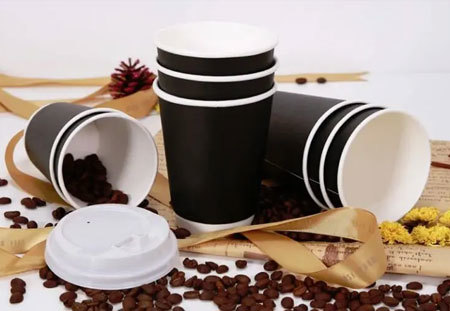The Rise of Wooden Cutlery: A Sustainable Alternative to Plastic
Release time:
2024-01-16
The rise of wooden cutlery marks a significant shift towards sustainable dining practices. By choosing wooden utensils over plastic, individuals and businesses can make a positive impact on the environment. Wooden cutlery offers numerous advantages, including environmental friendliness, biodegradability, durability, and being natural and chemical-free. Embrace this sustainable alternative and contribute to a greener future for generations to come.
Table of Contents:
1. Introduction
2. The Problem with Plastic Cutlery
3. Why Wooden Cutlery?
4. Advantages of Wooden Cutlery
5. Wooden Cutlery and Sustainability
6. How to Choose and Care for Wooden Cutlery
7. Frequently Asked Questions (FAQs)
7.1. Are wooden utensils safe to use?
7.2. Can wooden cutlery be composted?
7.3. How long do wooden utensils last?
7.4. Can wooden cutlery be reused?
7.5. Where can I buy wooden cutlery?
8. Conclusion
1. Introduction
In recent years, there has been a notable shift towards sustainable alternatives in various industries, including the food and dining sector. Plastic cutlery, which has long been a convenient but harmful choice, is now being replaced by a more eco-friendly option: wooden cutlery. This article delves into the rise of wooden cutlery as a sustainable alternative to plastic and explores its many advantages.
2. The Problem with Plastic Cutlery
Plastic cutlery has become a common sight in our fast-paced, on-the-go lifestyles. However, the convenience it offers comes at a significant cost to the environment. Plastic utensils are non-biodegradable, meaning they do not break down naturally and can persist in landfills and oceans for hundreds of years. This leads to pollution, harming marine life and contributing to the global plastic crisis. Additionally, the production of plastic cutlery consumes non-renewable resources and contributes to carbon emissions.
3. Why Wooden Cutlery?
Wooden cutlery offers a sustainable and eco-friendly alternative to plastic. Made from renewable resources, such as bamboo or birchwood, these utensils are biodegradable and compostable. Choosing wooden cutlery helps reduce the demand for plastic production and contributes to a healthier planet.
4. Advantages of Wooden Cutlery
4.1. Environmental Friendliness:
Wooden cutlery is a sustainable choice as it comes from renewable sources. The production process for wooden utensils consumes less energy compared to plastic, resulting in lower carbon emissions. When disposed of, wooden cutlery can be composted, returning nutrients back to the earth.
4.2. Biodegradability:
Unlike plastic cutlery, wooden utensils are biodegradable. They naturally decompose over time, without leaving harmful residues in the environment.
4.3. Durability:
Wooden cutlery is sturdy and durable, making it suitable for various dining occasions. It can withstand high temperatures and is less likely to break or melt compared to plastic alternatives.
4.4. Natural and Chemical-Free:
Wooden utensils are free from harmful chemicals. They are typically untreated or coated with food-grade oils, making them safe to use and reducing the risk of chemical exposure.
5. Wooden Cutlery and Sustainability
The rise of wooden cutlery reflects a growing awareness of the need for sustainable choices in our daily lives. By using wooden utensils, individuals and businesses can contribute to reducing plastic waste and supporting a circular economy. Wooden cutlery aligns with the principles of sustainability by utilizing renewable resources, minimizing environmental impact, and promoting composting.
6. How to Choose and Care for Wooden Cutlery
6.1. Choosing Wooden Cutlery:
When selecting wooden cutlery, look for products made from sustainably sourced wood. Opt for utensils that are free from additives and chemicals. Consider the design and functionality based on your specific needs.
6.2. Caring for Wooden Cutlery:
To prolong the lifespan of wooden utensils, it is important to clean them properly. Hand wash the cutlery with mild soap and warm water, avoiding prolonged soaking. Dry them thoroughly and store them in a cool, dry place to prevent mold or warping.
7. Frequently Asked Questions (FAQs)
7.1. Are wooden utensils safe to use?
Yes, wooden utensils are safe to use. They are typically untreated or coated with food-grade oils, ensuring they are free from harmful chemicals.
7.2. Can wooden cutlery be composted?
Yes, wooden cutlery is compostable. It can be disposed of in compost bins or facilities, where it will naturally break down and contribute to the creation of nutrient-rich soil.
7.3. How long do wooden utensils last?
The lifespan of wooden utensils depends on various factors such as usage and care. With proper cleaning and maintenance, wooden cutlery can last for several months to a few years.
7.4. Can wooden cutlery be reused?
Wooden cutlery can be reused multiple times, depending on its condition. However, it is recommended to use new utensils for hygiene purposes in certain settings.
7.5. Where can I buy wooden cutlery?
Wooden cutlery can be purchased from eco-friendly stores, specialty kitchenware shops, and online retailers. Look for reputable brands that prioritize sustainability and quality.
8. Conclusion
The rise of wooden cutlery marks a significant shift towards sustainable dining practices. By choosing wooden utensils over plastic, individuals and businesses can make a positive impact on the environment. Wooden cutlery offers numerous advantages, including environmental friendliness, biodegradability, durability, and being natural and chemical-free. Embrace this sustainable alternative and contribute to a greener future for generations to come.
CONTACT US
Tel:
Address:
Mamiao Street, Mamiao Town, Huaining County, Anqing City, Anhui Province, China.
Copyright © ANHUI LENKIN PACKAGING CO.,LTD. Powered by 300.CN SEO



